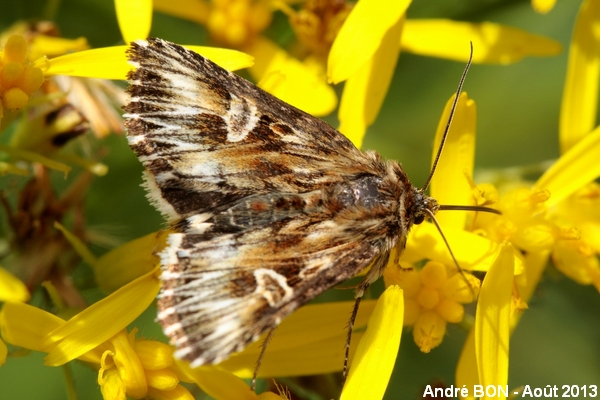
| Actinotia radiosa (Esper, 1804) |

|
|
Scientific name: Actinotia radiosa (Esper, 1804) Common name: French name: Noctuelle rayonnée, Noctuelle radiée. Order: Lepidoptera Suborder: Heterocera Family: Noctuidae Subfamily: Noctuinae Wingspan: 28-36 mm. Biotope: Dry meadows and mountain meadows up to an altitude of 1800 metres. Geographic area: Southern Europe east to southern Russia, Asia Minor, the Caucasus. Flight time: April-May then July-August. Number of generations : 2 Caterpillar: Reddish brown with thin pale yellow dorsal and sub-dorsal lines and one broad pale yellow lateral stripe, all more or less bordered by dark brown. Host plant: St. John's Wort (Hypericum sp) and particularly Common Saint John's Wort (Hypericum perforatum). |
Actinotia radiosa has brown to dark brown fore wings with some paler whitish yellow parts starting from the post discal area. The reniform spots are very visible as they are outlined by a very pale colour. The submarginal area shows a deeply serrated whitish line extending to the margin. This line draws a W character. The fringe is dark brown and interrupted by short white dashes. The hind wings are blackish brown with a large pale central patch crossed by dark veins. The fringe is whitish. Actinotia radiosa has a diurnal activity. It over winters as a chrysalis. |
| [To know more about the Actinotia radiosa] [Top] |

|
I have observed this Actinotia radiosa at an altitude of about 1700 metres. There is no possible confusion with this nice deeply serrated line in submarginal area. The picture would have been slightly better by increasing the distance from the subject to include a part of the environment. |